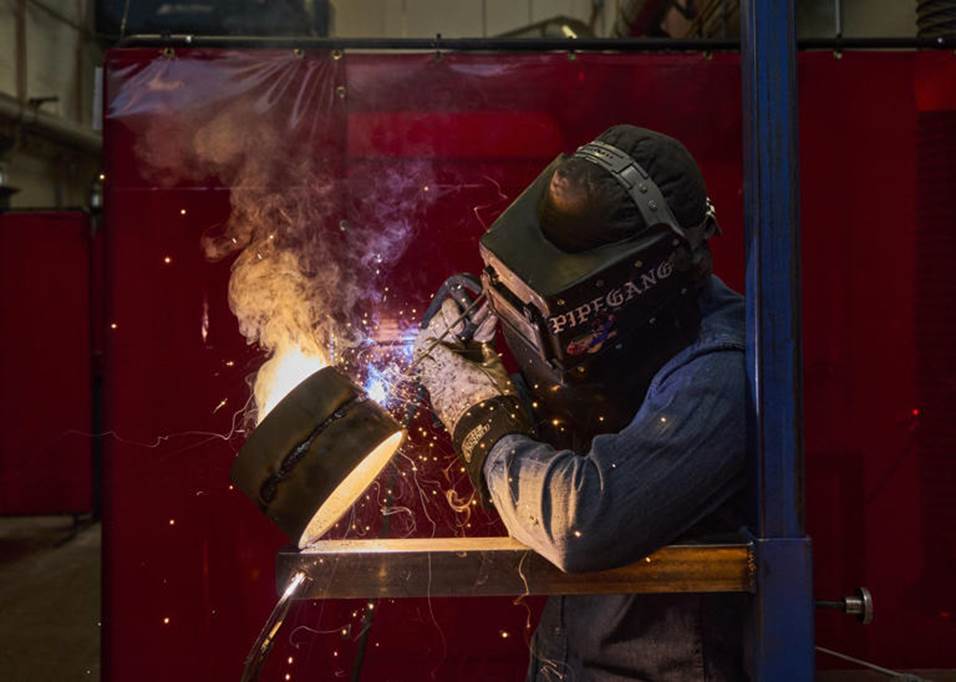Friends of Vocational Technical & Agricultural Education,
We are excited to share this piece from the Wall Street Journal, “How Gen Z Is Becoming the Toolbelt Generation.” It was initially brought to my attention by Upper Cape Tech Superintendent Roger Forget. (https://www.wsj.com/lifestyle/careers/gen-z-trades-jobs-plumbing-welding-a76b5e43?mod=hp_lead_pos7)
David
“How Gen Z Is Becoming the Toolbelt Generation”
America needs more plumbers, and Gen Z is answering the call.
Long beset by a labor crunch, the skilled trades are newly appealing to the youngest cohort of American workers, many of whom are choosing to leave the college path. Rising pay and new technologies in fields from welding to machine tooling are giving trade professions a face-lift, helping them shed the image of being dirty, low-end work. Growing skepticism about the return on a college education, the cost of which has soared in recent decades, is adding to their shine.
Enrollment in vocational training programs is surging as overall enrollment in community colleges and four-year institutions has fallen. The number of students enrolled in vocational-focused community colleges rose 16% last year to its highest level since the National Student Clearinghouse began tracking such data in 2018. The ranks of students studying construction trades rose 23% during that time, while those in programs covering HVAC and vehicle maintenance and repair increased 7%.
“It’s a really smart route for kids who want to find something and aren’t gung-ho on going to college,” says Tanner Burgess, 20, who graduated from a nine-month welding program last fall.
Though he’d originally figured he’d go to college, the route began to feel less appealing during the pandemic, when he watched his parents—both tech workers—gaze at their computers all day and realized he didn’t like the idea of spending his life seated before a screen.
After reading up on the skilled trades, he settled on welding. “I thought it was cool because it had a lot of fire,” says Burgess, who’s now helping install pipes for a new hospital in San Diego.
A secure job track and the prospect of steadily growing earnings didn’t hurt either. After five years at the profession, he says he expects to be making a six-figure annual income, based on what he sees others around him making.
“It feels good at the end of the day, I’m physically doing something and there’s a sense of completion,” he says.
Worker shortage
A shortage of skilled tradespeople, brought on as older electricians, plumbers and welders retire, is driving up the cost of labor, as many sticker-shocked homeowners embarking on repairs and renovations in recent years have found.
The median pay for new construction hires rose 5.1% to $48,089 last year. By contrast, new hires in professional services earned an annual $39,520, up 2.7% from 2022, according to data from payroll-services provider ADP.
That’s the fourth year that median annual pay for new construction hires has eclipsed earnings for new hires in both the professional services and information sectors—such as accountants or IT maintenance workers—ADP says.
Demand for trade apprenticeships, which let students combine work experience with a course of study often paid for by employers, has boomed lately. In a survey of high school and college-age people by software company Jobber last year, 75% said they would be interested in vocational schools offering paid, on-the-job training.
The rise of generative AI is changing the career calculus for some young people. The majority of respondents Jobber surveyed said they thought blue-collar jobs offered better job security than white-collar ones, given the growth of AI.
Nearly 80% of respondents in Jobber’s survey said their parents wanted them to go to college. Professions dominated by college-educated workers generally earn more over time. Professional and business services workers, for example, make a median $78,500 compared with $69,200 in construction, according to ADP.
“I’ll be honest, it took me a little bit mentally to get on board,” says Burgess’s mother, Lisa Hopkins, who studied drama and art history before obtaining an MBA. She never had much exposure to the trades, but she says she’s thrilled her son has found something he loves with good prospects: “He’s already thinking, ‘I want to buy my first house by the time I’m 24. I don’t have any debt, I’m off to the races.’”
New robotic equipment
Steve Schneider, a counselor at a high school in Sheboygan, Wis., says that for years, students called the vocational education wing “greaser hall,” believing mostly ne’er-do-wells and troublemakers wound up there. The fact that it was home to outdated wood and metalworking equipment didn’t help its appeal.
In recent years, though, businesses have raised funds and donated new equipment, including robotic arms, he says, adding that those classrooms now sit at the building’s main entrance.
“There’s still a presumption that four-year college is the gold standard, but it doesn’t take as much work to get people to buy into the viability of other options,” says Schneider.
Those in the industry are generally positive about their careers: A survey last year of skilled workers by home services site Thumbtack found that 94% would encourage their own kids or family members to pursue similar occupations.
While the skilled trades may be lucrative, they can take a harsh physical toll. In some markets, graduates have had trouble landing positions as new construction has slowed. Most employers prefer to hire those with experience, says Curt Nordal, a Riverside, Calif.-based recruiter specializing in commercial HVAC roles.
Alezet Valerio, 18, started at a construction site in Phoenix nine months ago, right after graduating high school. She was surprised when, in addition to learning how to hang drywall, her supervisors also began training her to run a robot that assists with site layout.
David J. Ferreira
MAVA Communications Coordinator
DavidFerreira
How Gen Z Is Becoming the Toolbelt Generation – WSJ – 4-1-2024.docx






